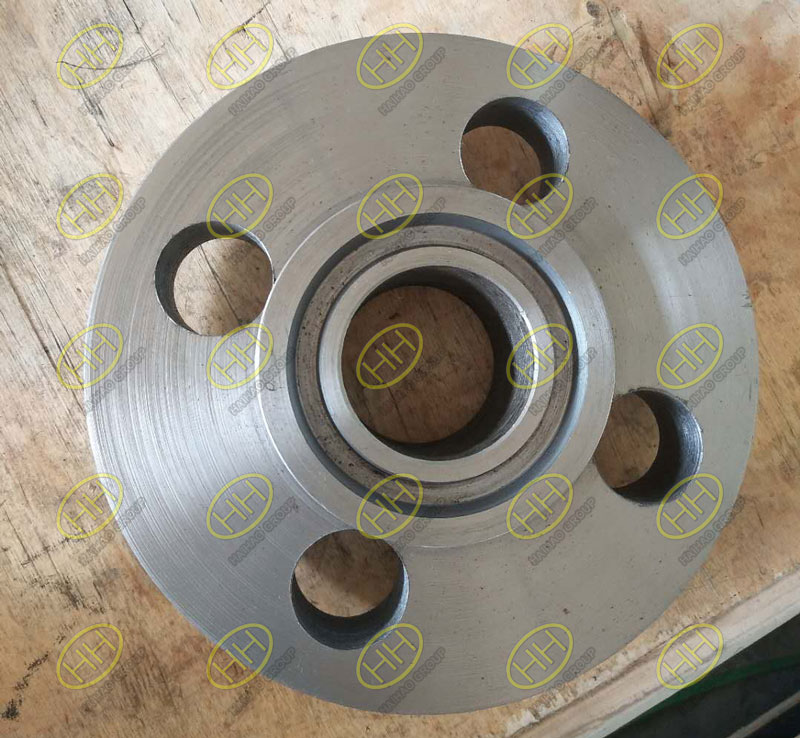Select 7 common pipe connection methods according to your needs
When it comes to pipelines, there are several commonly used connection methods based on their purpose and the type of pipe material. Let’s explore these methods and find the best fit for your requirements:

ANSI ASME B16.11 ASTM A105 threaded 90 degree elbows
Threaded Connections: These connections utilize threaded pipe fittings. Threaded connections are suitable for galvanized steel pipes with diameters equal to or smaller than 100mm. They are commonly used in exposed piping systems. For galvanized steel pipes, it’s important to treat damaged galvanized surfaces and exposed threaded parts with anti-corrosion measures. Flanges or special fittings should be used for connecting galvanized steel pipes, and any welding connections to flanges should be galvanized a second time.

Epoxy coating steel pipe with flange
Flanged Connections: Flanged connections are applied to larger diameter pipes. They are commonly used to connect valves, check valves, water meters, water pumps, and sections of pipes that require frequent disassembly and maintenance. If galvanized pipes are used for welding or flanged connections, the welded areas should be galvanized again or protected against corrosion.

Manual welding large size elbow
Welding Connections: Welding is suitable for non-galvanized steel pipes and is often used for concealed piping and larger diameter pipes. It is widely employed in high-rise buildings. Copper pipes can be connected using specialized fittings or by welding. For pipe diameters smaller than 22mm, socket or sleeve welding is recommended, with the socket installed in the direction of the flow. For diameters equal to or larger than 2mm, butt welding is recommended for copper pipes. Stainless steel pipes can be connected using socket welding.
Grooved Connections (Clamp Connections): Grooved connections, also known as clamp connections, are commonly used for aluminum-plastic composite pipes. The connection is achieved by threading a nut onto the end of the pipe, inserting the core of the fitting into the pipe end, and tightening the fitting with a wrench. Threaded clamp connections can also be used for copper pipes.
Press Connections: Press connections, using stainless steel press fittings, have replaced traditional water supply pipe connection methods such as threading, welding, and gluing. Press connections offer advantages such as water quality protection, excellent corrosion resistance, and long service life. During installation, the press fittings with specially designed sealing rings are pressed onto the pipe using dedicated tools, providing both sealing and fastening functions. This method offers convenience, reliability, and cost-effectiveness.

ANSI ASME B16.5 socket weld flange
Socket Connections: Socket connections are used for joining cast iron pipes and fittings in water supply and drainage systems. There are two types: flexible connections, which utilize rubber rings for sealing, and rigid connections, which use asbestos cement or expanding fillers for sealing. Lead sealing can be applied for critical applications.
Groove Joint Connections: Groove joint connections are suitable for galvanized steel pipes with diameters equal to or larger than 100mm. They are commonly used in systems for fire protection, HVAC hot and cold water, water supply, and rainwater. Groove joint connections offer advantages such as simplicity of operation, maintaining the original characteristics of the pipe, safety during installation, system stability, easy maintenance, and labor and time savings.
Choosing the right connection method for your pipelines is essential for ensuring efficient and reliable operations. Consider factors such as pipe material, diameter, application, and maintenance requirements to make an informed decision. By selecting the appropriate connection method, you can ensure a robust and long-lasting piping system that meets your specific needs.

